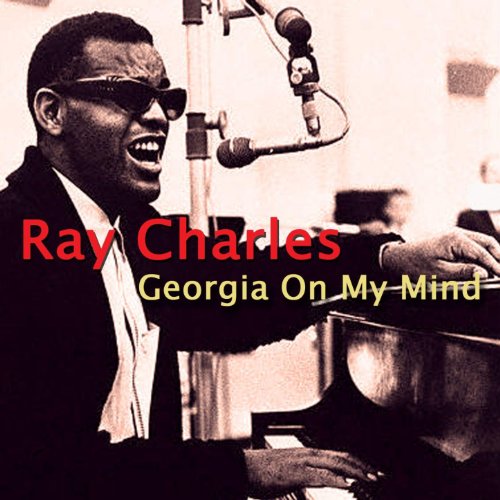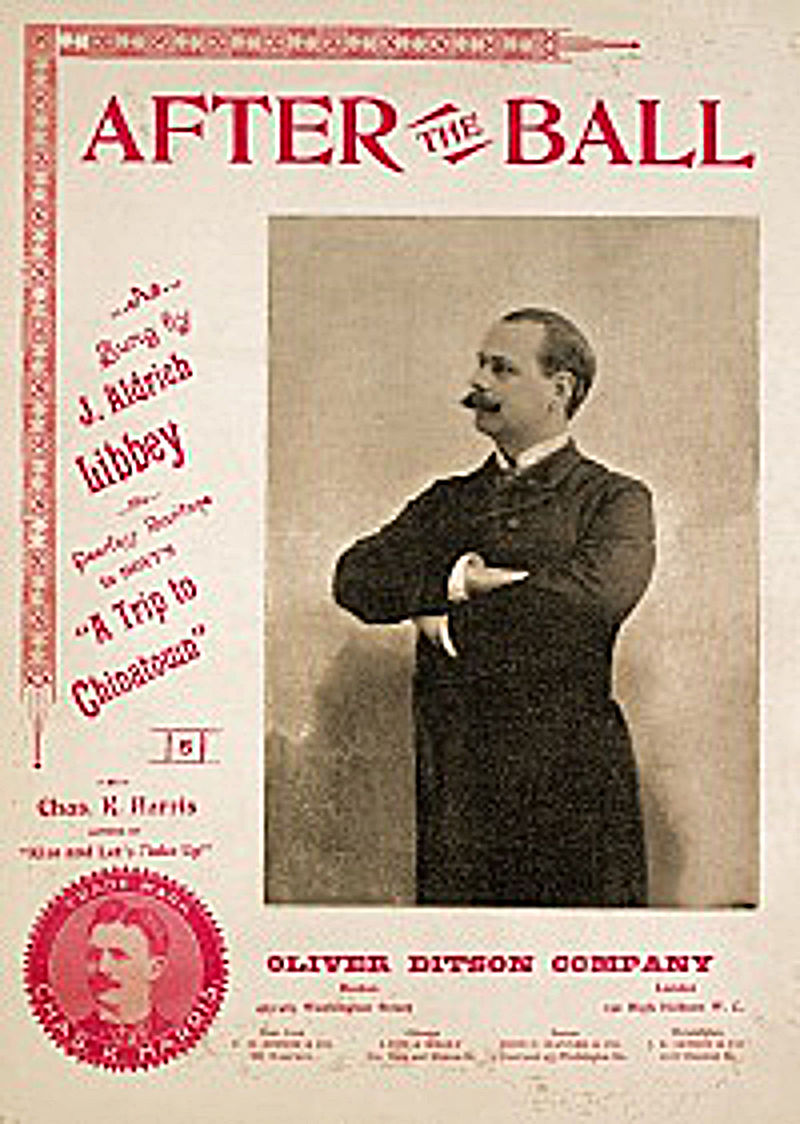|
|
Originally posted 4/22/2022. In honor of the 10th anniversary of the DMDB blog on January 22, 2019, Dave’s Music Database launched its own Hall of Fame. This is the 14th set of song inductees. These are taken from the Dave’s Music Database list of the top 100 Tin Pan Alley songs of all time. Five songs in the top 10 of that list have been previously inducted: “Alexander’s Ragtime Band,” “Take Me Out to the Ball Game,” “Shine on, Harvest Moon,” “Some of These Days,” and “Let Me Call You Sweetheart.” The other five songs in the top 10 are being inducted as well as the top five highest-ranked songs in Dave’s Music Database which appear on the Tin Pan Alley list. |
Ben Bernie with Scrappy Lambert & Billy Hillpot “Ain’t She Sweet” (1927)Inducted April 2022 as “Top Tin Pan Alley Songs” |
| “Ain’t She Sweet” and “Happy Days Are Here Again,” both written by Milton Ager and Jack Yellen, became symbols of the Roaring Twenties, WK a time when “stubbornly determined American resilience and optimism in the face of hard times.” SS Lou Gold and His Orchestra recorded “Ain’t She Sweet” first on January 17, 1927, SH but the most successful recording was made 11 days later SH by Ben Bernie and His Roosevelt Orchestra. PM Read more. |  |
Ray Charles “Georgia on My Mind” (1960)Inducted April 2022 as “Top Tin Pan Alley Songs” |
| Hoagy Carmichael, who critic Dave Marsh called “the most blues-inspired writer Tin Pan Alley produced,” DM co-wrote the song back in 1930 and was one of the first to record it. MM Over the years, there were multiple recordings and chart versions of the song. However, it is Ray Charles’ soulful version which has become the most beloved and most successful. It was his driver, Tommy Brown, who suggested Charles record the song when he heard his boss crooning the song in the car. DM Read more. |  |
Bing Crosby with George Stoll’s Orchestra “Pennies from Heaven” (1936)Inducted April 2022 as “Top Tin Pan Alley Songs” |
| This was the biggest pop hit from 1936. CPM Bing sang it in the film of the same name and garnered an Academy Award nomination for the song. Presumably, the lyrics are intended to “evoke a sense of optimism in difficult times, assuring the listener that when it rains, ‘There’ll be pennies from heaven for you and me.’” BF However, in the introductory verse, listeners are warned that they may have to atone for their ancestors’ failure to appreciate the better things in life. “Storms may bring us fortune, but with that fortune we must buy what we used to get for free.” BF Read more. |
George J. Gaskin “After the Ball” (1893)Inducted April 2022 as “Top Tin Pan Alley Songs” |
| Charles K. Harris saw two lovers get in a fight at a dance and was inspired to write a song in which an old man explains to his niece that he never married after seeing his sweetheart kissing another man at a ball. He finds out years later it was her brother. SS It was the first song to sell a million copies of sheet music, SF eventually racking up five million and becoming the best seller in Tin Pan Alley’s history. WK George J. Gaskin and John Yorke Atlee recorded the song. The former was a #1 for 10 weeks. Read more. |  |
Haydn Quartet “In the Good Old Summertime” (1903)Inducted April 2022 as “Top Tin Pan Alley Songs” |
| Comedian Ren Shields and black-faced minstrel George “Honey Boy” Evans were inspired to write “the signature song for summer” PS by a trip to the beach with singer-actress Blanche Ring. TY2 Evans remarked that he liked “the good old summertime.” Shields said it would make a great song title. He worked up lyrics and Evans improvised a basic melody. RA Ring performed it on Broadway. RA Then J.W. Myer included the song in his vaudeville act RCG and took it to #1, as did the Haydn Quartet and Sousa’s Band. The Haydn Quartet’s version ranked as Billboard’s song of the year in 1903. CPM Read more. |  |
Al Jolson with Prince’s Orchestra “You Made Me Love You (I Didn’t Want to Do It)” (1913)Inducted April 2022 as “Top Tin Pan Alley Songs” |
| For this song, James Monaco, an immigrant from Italy, collaborated with lyricist Joe McCarthy who wrote for Broadway shows in the 1920s and ‘30s. LW It is a “skillfully crafted lyric that perfectly matches its bluesy melody, and suited Jolson’s…capacity for melodrama.” LW This song “was identified with him for the rest of his career.” JA Read more. |
Isham Jones “It Had to Be You” (1924)Inducted April 2022 as “Top Tin Pan Alley Songs” |
| “This is one of the high points in Tin Pan Alley era songwriting” RCG and “one of the most enduringly popular ballads of the 1920s.” SS-589 Unlike many of its Great American Songbook counterparts, “this effortless classic” RCG didn’t “put love and lovers on a pedestal.” TM It was a sophisticated song “with grown-up, often witty lyrics that have stood the test of time.” LW The “perennial nightclub favorite” JA charted six times in 1924 alone. Interestingly, the most successful version of the song is an instrumental version by Isham Jones. Read more. |  |
The Mills Brothers “Paper Doll” (1942)Inducted April 2022 as “Top Tin Pan Alley Songs” |
| “Paper Doll”, a song about preferring a paper doll to the far more fickle real-life versions, TY1 was written in 1915 and wasn’t published until 1930. WK The songwriter, Johnny S. Black, died six years before it even charted. The song also marked a revival for the Mills Brothers who had been suffering from declining sales for years. WK It hit #1 in 1943 and went on to sell six million copies and become one of the ten best sellers of the first half of the century. PM Read more. |
The Original Dixieland Jazz Band “The Darktown Strutters’ Ball” (1917)Inducted April 2022 as “Top Tin Pan Alley Songs” |
| Shelton Brooks was inspired to write “Ball” by a 1915 social gathering during the Panama Pacific International Exposition he attended in San Francisco. SS Sophie Tucker introduced it on vaudeville. SS In 1917, the Original Dixieland Jazz Band recorded an instrumental version which reached #2 and was named to the Grammy Hall of Fame. In 1972, it was one of ten songs named to the Songwriters Hall of Fame as an historic standard. SS Read more. |  |
Kate Smith “God Bless America” (1939)Inducted April 2022 as “Top Tin Pan Alley Songs” |
| Irving Berlin originally wrote this song in 1918 while serving in the Army, intending it for a 1918 revue called Yip, Yip, Yaphank. WK However, Berlin shelved the song, considering it inappropriate for the comedic musical. SF Two decades later, Kate Smith, asked Berlin to write something new for her radio show on Armistice Day. TY1 He revived “God Bless America,” TY1 updating the lyrics to make it a peace song SF taking the form of a prayer. WK It became Smith’s signature song. Read more. |








No comments:
Post a Comment